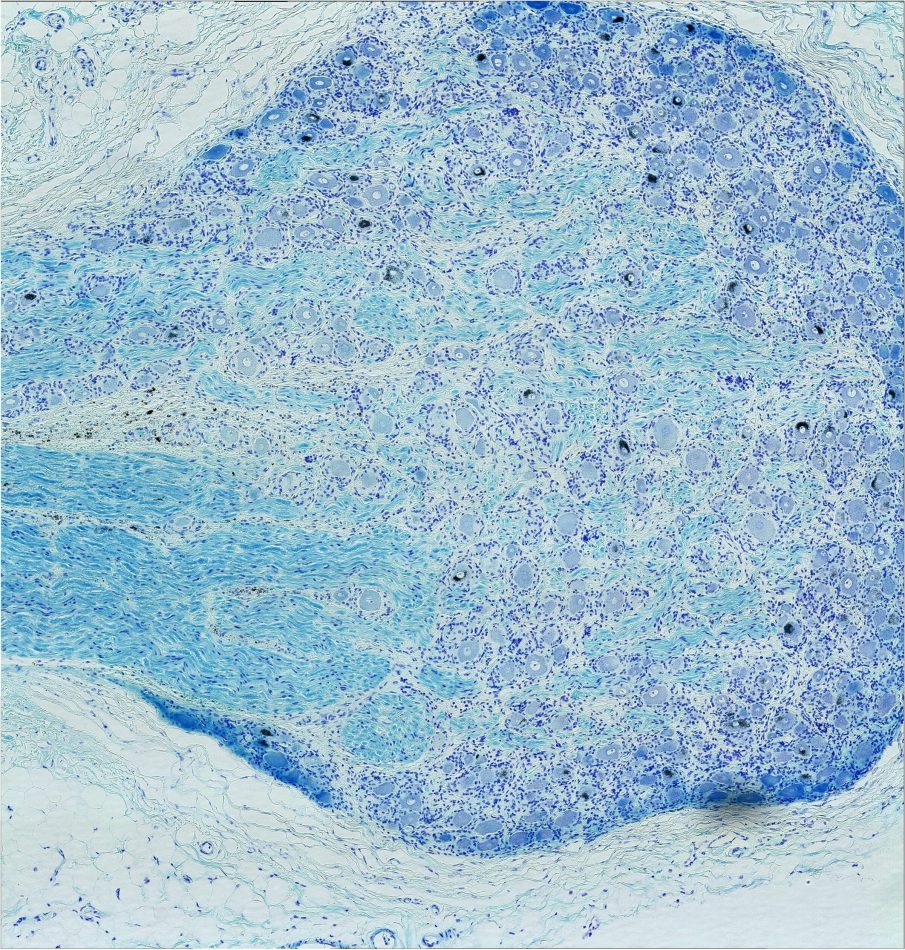DRG & Spinal Cord Inventory

TRANSLATIONAL RESEARCH PROMOTION FOR HUMAN DRG & SPINAL CORD TISSUE
AnaBios has an archive of more than 7,500 high-quality human DRG and spinal cord tissue samples. Until the end of 2023, AnaBios is offering highly-affordable pricing to facilitate translational research in academic, biotech and pharmaceutical laboratories.
All archived AnaBios human tissue samples are $500, and are from both normal (healthy) donors and donors with known pain conditions (I.e., fibromyalgia, neuropathic pain or osteoarthritis). To access our DRG and spinal cord inventory, please complete the form below. Once you click the “Submit” button, your download will begin. If you have questions, please contact us at info@anabios.com.
ALL TISSUE SAMPLES – $500 EACH
ACCESS OUR HUMAN TISSUE INVENTORY
HUMAN DORSAL ROOT GANGLIA TISSUE SAMPLES
- Industry Gold Standard: Proprietary technology minimizes the ischemic cellular process breakdown, preserving RNA integrity and improving sample quality. This same process allows AnaBios to conduct physiological assays with live human DRG neurons in culture.
- Tissue samples are recovered from donors with known demographics, including age, sex, BMI, ethnicity, cause of death and social medical history.
- The availability of DRG tissue samples from different spinal cord regions (T1-S1) allows researchers to study peripheral nervous system functions or diseases.
- The tissue is backed by published data demonstrating its viability and functionality in pain and sensory processing research.
- DRG samples are available from both normal (healthy) donors and donors with known pain conditions (I.e., fibromyalgia, neuropathic pain or osteoarthritis).
DOWNLOAD BROCHURE
HUMAN SPINAL CORD TISSUE SAMPLES
- High RNA integrity (RIN) scores, which indicates high-quality tissue with intact RNA for downstream applications, including gene expression analysis.
- Proprietary tissue processing solution minimizes the ischemic cellular process breakdown, preserving tissue integrity and functionality.
- Rigorous protocols and measures help AnaBios human tissue samples maintain their cellular integrity, unlike traditional biobanks that typically provide lower quality tissue with less rigorous quality control measures.
- AnaBios spinal cord tissue samples are available in both flash frozen and fixed formalin formats to meet different experimental needs.
- Spinal cord samples are available from both normal (healthy) donors and donors with known pain conditions (I.e., fibromyalgia, neuropathic pain or osteoarthritis).
DOWNLOAD BROCHURE
PAIN RESEARCH WEBINARS
High-Depth Single Soma RNA Of Human DRG Neurons
Presented by Dr. Wenqin Luo

Most knowledge regarding dorsal root ganglia neurons comes from model organisms, which may have significant species differences from humans. In this webinar, Dr. Wenqin Luo’s research team developed a new approach by isolating individual somas of human DRG neurons using laser capture microdissection and performing high-depth Smart-seq2 RNAseq. Their results not only provide novel molecular and cellular mechanisms for understanding human somatosensation but serve as an important reference when translating animal studies into human treatments. Click here to view the preprint of Dr. Luo’s research.
Excitatory NMDA Receptors In Rodent & Human Spinal Pain Processing
Presented by Dr. Mike Hildebrand

In this 60-minute video, Dr. Mike Hildebrand, Associate Professor of Neuroscience at Carleton University, highlights his team’s recent work developing new human spinal cord tissue models of pain processing that parallel rodent in vivo and ex vivo pain models. Using these complementary approaches, they are investigating molecular mechanisms of spinal pain processing across development, sex and species, including the function and regulation of excitatory glutamate receptors at dorsal horn synapses.
